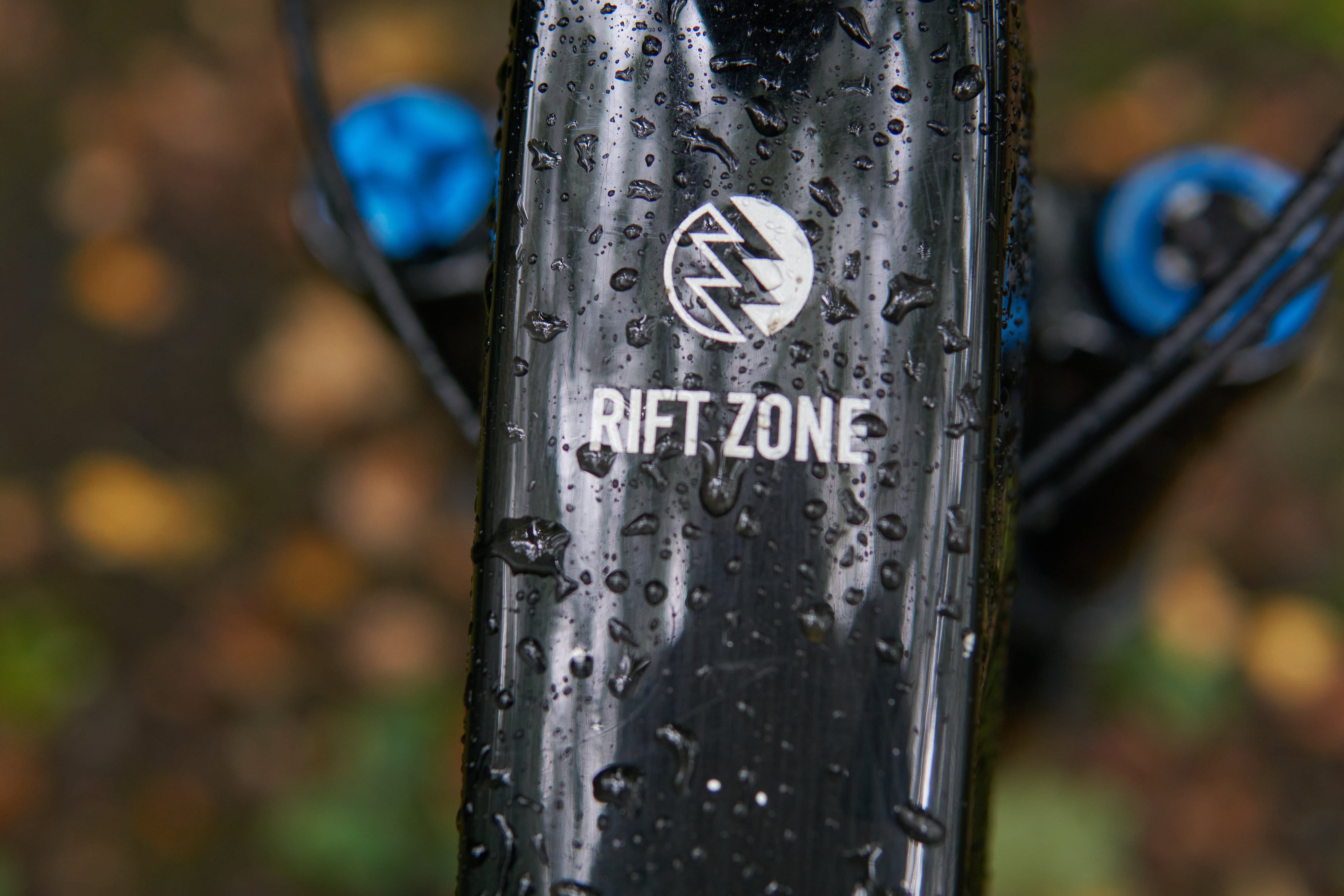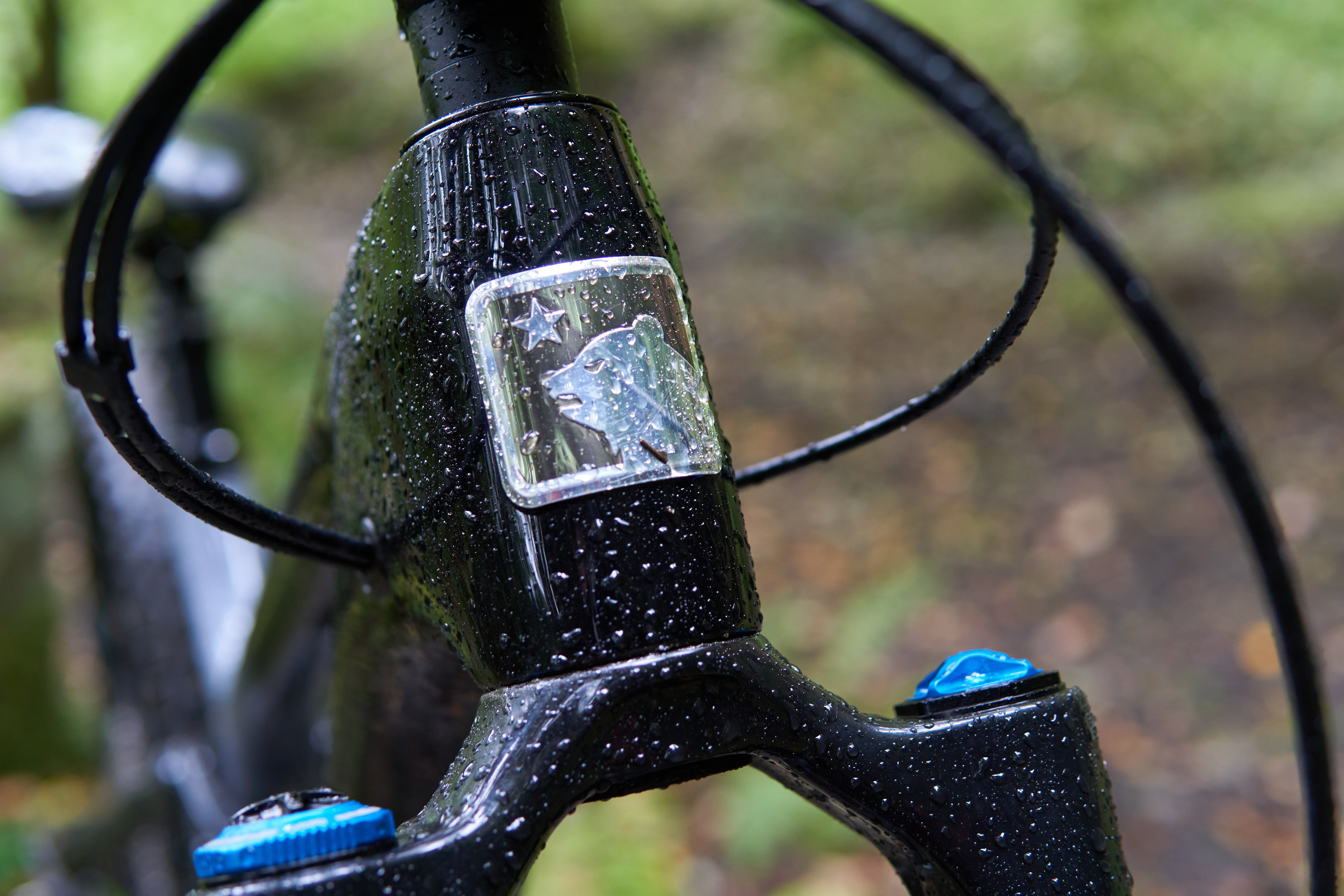The Marin Rift Zone XR – XR stands for eXtra Rad in case you were wondering – bumps the front travel up to 140mm, adds a coil shock and beefs up the build.
- Brand: Marin
- Product: Rift Zone XR
- Price: £4,365
- From: Marin Bikes
- Review by: Antony for 4 months

Three things I loved
- The fork and the brakes are a great pairing on steeper trails
- Good traction from the shock
- Built to a sensible budget
Three things I’d change
- A bit rattly when descending
- Tyres wore quickly
- Noisy non-Shimano chain

It’s been a while since we had a Marin through the doors of Singletrack, and for me and a lot of other people the brand has been flying slightly below the radar of late.
You probably know Marin as a genuine Big Hitter from the early days of mountain biking, but not all of its modern bikes have made such an impact. Its quirky-looking, spell check-goading “Naild R3ACT” bikes were well received by techy bike journo types, but were too funky for your average mountain biker.
So the designers went back to the drawing board, and Marin’s most recent Multitrac suspension platform is much more conventional – it’s yet another linkage-activated (do we still call them ‘faux bar’?) single pivot – but it’s proven to be a good match for its newer trail and enduro bikes.
Throw in some fun 80s-inspired colour schemes (not on this model unfortunately) and an interesting roster of sponsored riders, and the folks at Marin are building back their fanbase.
The bike
The regular Rift Zone is Marin’s answer to the question “What does a trail bike look like?”, with 130mm front suspension, 125mm rear, and a progressive but not shocking set of geometry figures.
The first bike in Marin’s lineup to get the XR (eXtra Rad!) version was the Alpine Trail, a 150mm travel enduro beast. Does it make sense to try and give a versatile, shorter travel trail bike the same treatment?

At £4,265.00 the Rift Zone XR also sits at the top, price-wise, of a big old family tree, with a model name encompassing everything from 24 inch wheel kids’ bikes, through to value-focused 27.5 and 29-wheeled models that will set you back less than two grand.
The XR, being very much a flagship model, has a carbon front triangle, alloy swingarm, and a build that promises a lot of fun on the trail. Spec highlights include the Fox Performance Elite Float 36 forks, a Fox Factory Series coil shock, and Shimano XT 4-pot brakes.
With its neo-retro fade and spatter paint job, It’s a handsome looking machine, and although the RRP is a fair wad for most people, you’re getting a lot of bike for your cash.

The frame geometry is mostly what you’d expect from a modern trail bike, with a 65.1° head angle, 76° seat angle, and roomy but not torturous 475mm reach on a size L. It’s available in four sizes, all with 29in wheels front and rear.

Compared to a standard Rift Zone its head angle is slightly slacker and the reach slightly less, the reason for this being the longer 140mm fork. This also raises the BB height by a few millimetres and lengthens the wheelbase ever so slightly. Some bike manufacturers might use different rocker links or dropouts on different models to minimise changes like this, but a higher than fashionable BB can be a definite advantage on beaten-up rocky trails. The back end is also relatively short, hinting at fun over all-out speed.
The ride
On the trail, the Rift Zone XR does indeed feel somewhere between a nippy trail bike and a bigger enduro machine. It’s not particularly light, but the weight isn’t so noticeable as to take all-day rides off the menu. The shock also has a climb switch should you become convinced that it’s wasting your energy (I really couldn’t tell).

On the way down, the front of the bike is very controlled. The latest generation of Fox 36 fork offers excellent support and never really uses up all its travel, even on really hard compressions.
The suspension at the rear needs a bit of care setting up: the M, L and XL sizes all use a 450 lb spring, which could encompass quite a bit of variation in rider weights. In fairness, there’s a wide range of preload adjustment on this model of shock.
After a couple of initial rides where the suspension felt a bit too harsh, I tried fitting a lighter spring, which added a bit of suppleness and control, but didn’t unlock a magic carpet setting. Re-fitting the original spring and winding off all the low speed compression brought a fair dollop of extra climbing traction without wallowing at low speed.
The mid-stroke of the suspension still didn’t feel very “coil” though. On speedy stuttery terrain it wasn’t hideously harsh, but nor was it as plush as a longer travel coil shock. The rebound damping also needs setting up carefully – not too much, not too little. As an average sized man, I’m used to just jumping on bikes and riding them, but some extra fettling is required here.

Overall, the build of the bike is solid. Good brakes are never a bad thing on any bike, and four piston Shimano XT models have loads of stopping power and more modulation than their less beefy equivalents.
The SLX/XT drivetrain is quality stuff, although the KMC chain was noisy before it bedded in, and tended to look a bit sad and rusty unless I really kept on top of maintenance.
A 150mm TranzX dropper post is functionally fine – it looks a bit stingy, but at 5’10 I didn’t really need a longer one. The super-wide 820mm bars that came on our test bike seem to be a non-standard item, although I thought these suited the build really well, even if I did find myself clipping the odd tree.
I haven’t used Vee Rubber tyres before, but they have a similar level of grip and performance to other brands’ all round enduro tyre offerings, adding to the feeling that this is a confidence-inspiring bike, albeit not one for racing up the climbs on. The tyres did wear pretty fast, and after a few months of riding the rear is looking ready for the recycling bin.

On undulating mellow trails, the Rift Zone XR is fun, but doesn’t stand out. Where it really comes alive is plunging down anything steep and sketchy. Those powerful brakes and the supportive fork are a great combo on anything vertiginous and I always felt there was a bit of suspension travel or braking power in reserve.
Durability notes
I was able to give the Marin Rift Zone XR a whole summer’s thrashing, which has highlighted a couple of minor quibbles.The Shimano hub/own brand rim wheels came out of true pretty quickly. It hasn’t got to the stage yet where it affects the ride of the bike, and getting them dewobbled is a pretty straightforward job, as mechanical tasks go, but it’s part of the bike I’d look to upgrade when cash allowed.
There are a couple of other places where the budget seems to have been squeezed a bit – the 175mm FSA cranks, for example. Longer cranks can be a bit of a liability on the trails around here, although these ones worked fine, and didn’t cause a profusion of pedal strikes given the relatively high BB.

The other quibbles I had with the Marin Rift Zone XR were cable-related.There is quite a bit of rattling from the cables when descending, and the little grommets covering the cable ports were reluctant to stay in place. The latter isn’t an issue that’s specific to this bike, but it’s a shame that it spoils the tidy detailing of a nice-looking frame.
Overall
Sitting somewhere between trail and enduro – categories that are already pretty close together these days – the Marin Rift Zone XR might seem a bit superfluous. The coil shock adds great climbing traction and looks cool, although it also tips the overall weight towards the enduro end of the scale. But this is still a really fun bike, and it would suit anyone whose riding involves mixing up steep fall-line trails with less extreme stuff.

Specification
- Frame // Unidirectional Carbon Fiber Front Triangle, Series 4 Alloy Rear End, 125mm
- Shock // Fox Factory Series Coil
- Fork // Fox Performance Elite Float 36, 140mm Travel
- Wheels // Shimano Disc 32H/Marin alloy rims, 29mm inner width
- Front Tyre // Vee Tire Co Attack HPL, 29×2.5″
- Rear Tyre // Vee Tire Co Attack HPL, 29×2.5″
- Chainset // FSA Gradient, 175mm, 32T
- Shifter // Shimano SLX 12sp
- Rear Mech // Shimano XT 12sp
- Cassette // Shimano SLX 10-51T
- Brakes // Shimano XT 4-pot, 203/180mm rotors
- Stem // Marin CNC, 35mmø, 35mm length
- Bars // Marin, 35mmø, 780mm width
- Grips // Marin Lock On
- Seatpost // Tranz-X, 150mm
- BB // FSA
- Size Tested // L
- Sizes Available // S, M, L, XL
- Weight // 14.5kg
Geometry of our size L test bike
- Head angle // 65.1°
- Effective seat angle // 76°
- Seat tube length // 425mm
- Head tube length // 110mm
- Chainstay // 425mm
- Wheelbase // 1,219mm
- Effective top tube // 629mm
- BB height // 31mm BB drop
- Reach // 476mm
Join our mailing list to receive Singletrack editorial wisdom directly in your inbox.
Each newsletter is headed up by an exclusive editorial from our team and includes stories and news you don’t want to miss.





